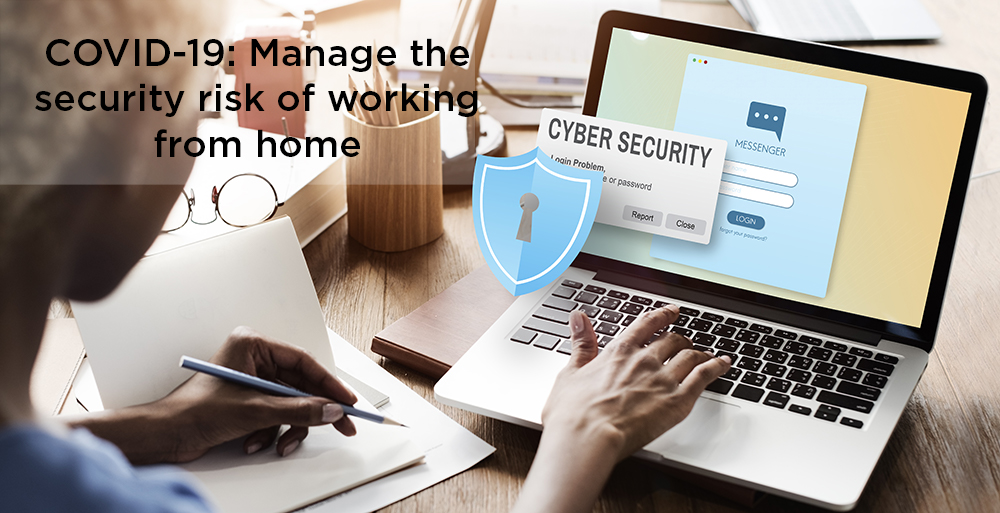In a previous post, we discussed how to navigate work from home during the COVID-19 pandemic. Our focus was specifically on business continuity planning and business process automation to reduce the impact on employees and operations. Assuming that organizations have by now settled into the new normal of social distancing and digital rules, meetings, classes and even happy hour being conducted in the virtual space, we face another hurdle. With the COVID-19 virus putting millions of more people into the “working from home” category, cloud service providers are being put to the test and cybersecurity is becoming a growing issue as cybercriminals use the Coronavirus to target companies and individuals.
How do we manage the security risk in these new work-from-home environments? Business leaders can respond by:
1. Understanding the threats to their organizations
2. Providing clear guidance and promote transparent communication
3. Providing the right security capabilities
Both business leaders and employees have critical roles and responsibilities to secure their organizations and ensure that cyberattacks do not further exacerbate the already disrupted work environment.
1. Understanding the threats to your organization
Business leaders together with their IT security team should identify potential attack vectors resulting from more employees working from home and prioritize the protection of their most confidential and vulnerable information and business-critical applications.
2. Providing clear guidance and promote transparent communication
To do this, business leaders must ensure that work-from-home policies are clear and include steps that employees can take to ensure the security of their home-working environment. This should include instructing employees to communicate with their IT security teams about any suspicious activities and encouraging them to take personal responsibility for their conduct during this time.
3. Provide the right security capabilities
A further safeguard is to ensure that all corporately owned or managed devices are equipped with essential security capabilities, offering the same network security best practices that exist within the enterprise to all remote environments. During this critical time, organizations have an increased responsibility to set clear expectations about how they are managing security risks in the new work environments, leveraging new policies and technologies and empowering their employees. It’s imperative that security messages are relayed from the very top of an organization, and that good examples are set from the outset.
Stage2Data offers Cloud Provider Redundancy (CPR) that enables organizations to replicate their data and services to a secondary cloud provider where everything exists in two (or more) locations, readily available at all times. Should a disaster occur, a secondary cloud provider will take over full functionality. All systems, data, and software will be accessible and business operations can continue to run as usual. Once the problem has been resolved, changes are synchronized from the secondary (backup) cloud provider back to the primary cloud provider until everything is restored back to normal. CPR introduces a new cost-effective approach to DRaaS and is much more affordable than traditional DR replication services. The CPR solution works with both public and private cloud providers, it is scalable and 100% secure.
To flatten the curve, we’re offering your first month completely free.
5 Ways Next-Gen Data
Management Boosts Cyber Resiliency
If you found this post interesting, you might enjoy these too:
COVID-19: How to work from home the right way


